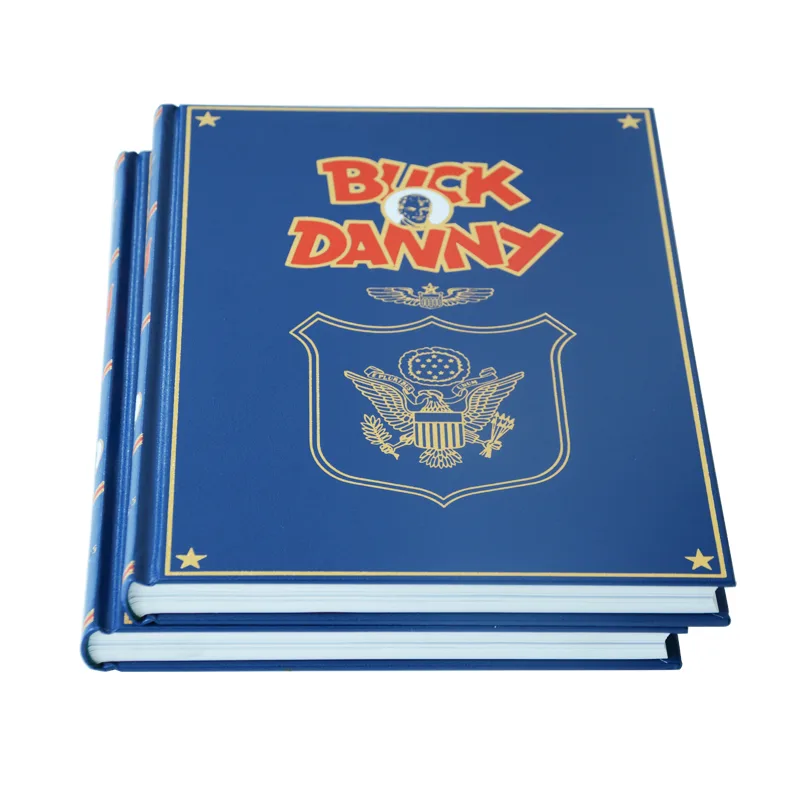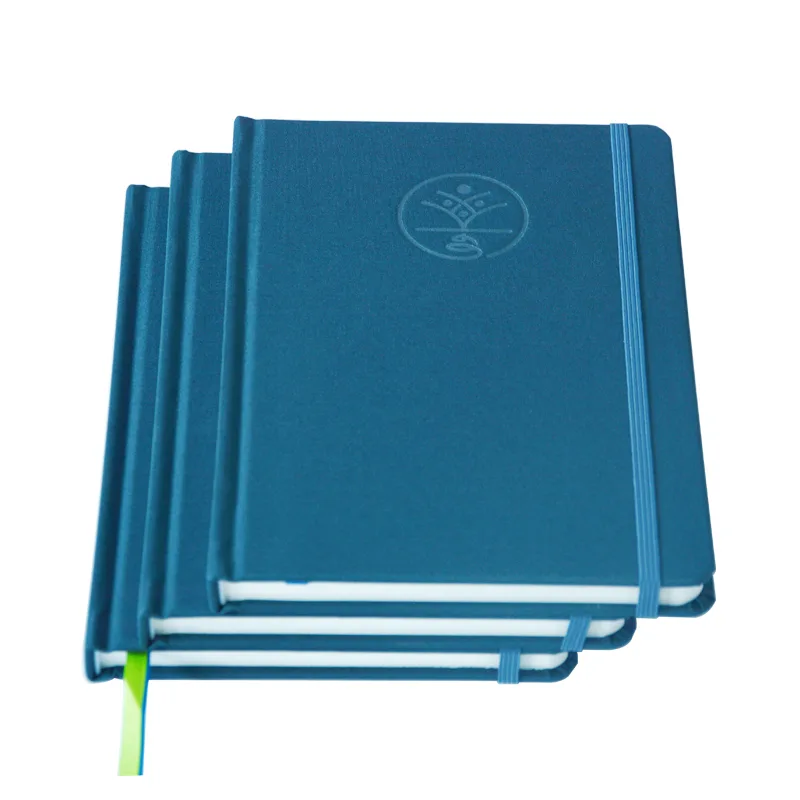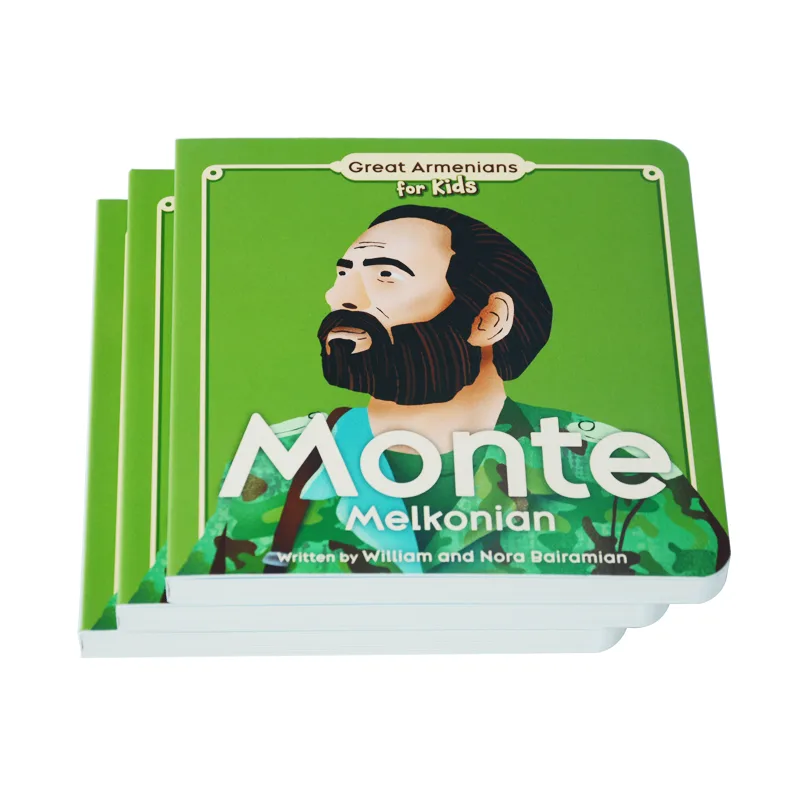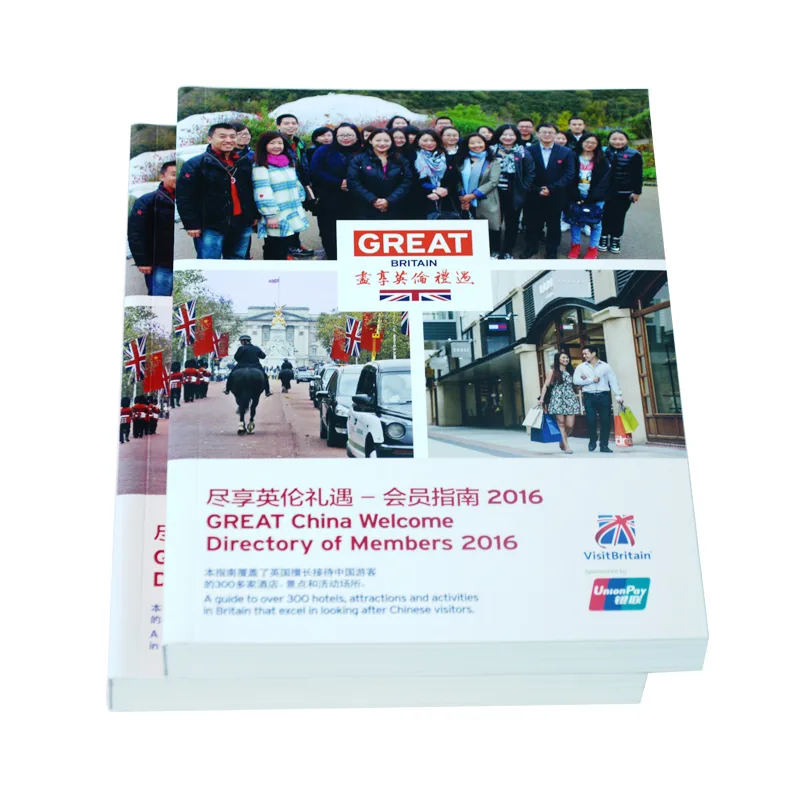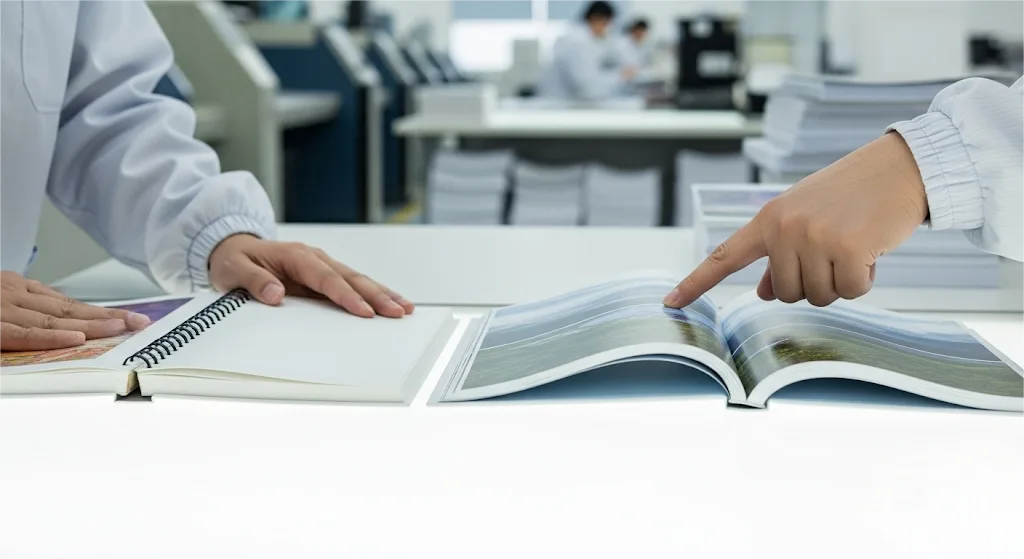For publishers, ensuring a children’s book is safe and compliant is the most critical part of the production process. This field-tested guide helps you select compliant materials and meet international standards, giving you the expert insights needed to print with complete confidence.
Key safety standards for children’s book printing include CPSIA for the U.S. market and EN-71 for Europe, which regulate substances like lead and phthalates. Essential material choices involve using non-toxic soy-based inks, FSC-certified paper, child-safe adhesives, and physical features like rounded corners.
In short, this guide provides a complete framework for navigating compliance, choosing safe materials, and implementing a verification process with your printer. Keep reading to discover our insider tips, including the common “certificate trap” many publishers fall into and the exact questions you must ask before your next bulk print run.
Decoding Key Safety Standards: CPSIA & EN-71
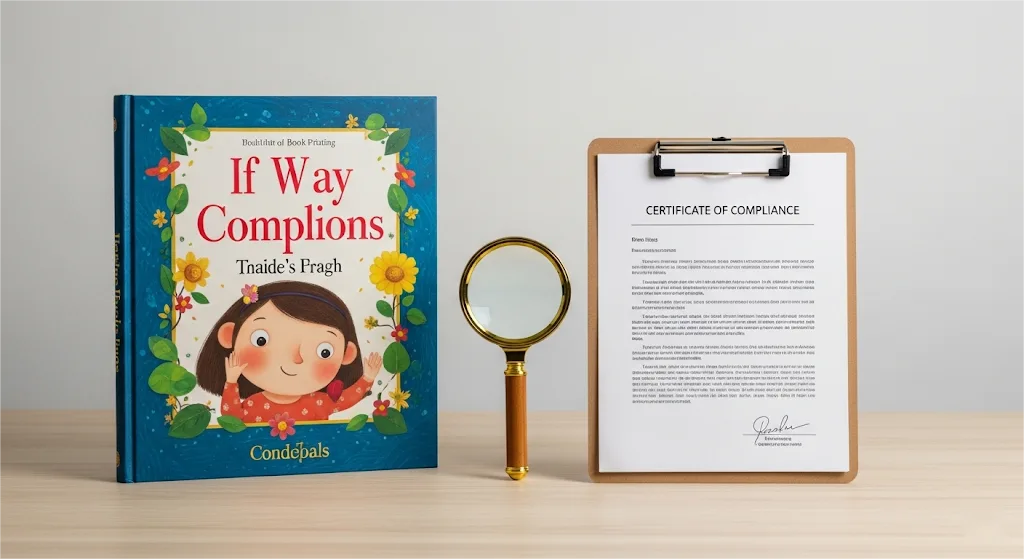
Navigating the world of product safety can feel complex, but it boils down to understanding the specific regulations of your target market. For publishers aiming for the US and European markets, two key standards are non-negotiable. Let’s break down what each one means for your children’s book printing project.
For the U.S. Market: Understanding CPSIA
If your book will be sold or distributed in the United States, complying with the Consumer Product Safety Improvement Act (CPSIA) is a legal requirement. This act applies to all products intended for children 12 years of age or younger. For printed books, the CPSIA primarily sets strict limits on two substances:
- Lead: In both the paper/board (substrate) and any surface coatings.
- Phthalates: Specific types of phthalates are restricted, which can be relevant for some plastics, coatings, or special book features.
What this means for you as a publisher is that you must be able to verify that all materials used in your book are compliant, a core part of our Quality Control in Book Printing.
For formal entry into the US market, a Children’s Product Certificate (CPC) is typically required. This is a document you, as the importer, create to certify that your book complies with all applicable safety rules, based on passing test results from a CPSC-accepted laboratory.
For the European Market: Understanding EN-71
For books sold in the European Union, the key standard is EN-71, which governs toy safety. Children’s books, especially interactive and board books, often fall under this category and typically require a CE mark to signify compliance.
The most relevant section for books is EN-71 Part 3, which focuses on the “migration” of specific elements. In simple terms, it tests whether any harmful substances, such as heavy metals (like cadmium or mercury), could transfer from the book to a child if it were chewed or licked.
To ensure your book is ready for the EU market, your printing partner must demonstrate experience with these regulations. The process often involves selecting materials known to pass these tests and, for full assurance, sending a finished sample to an accredited lab.
A successful test report is a key part of the technical file needed to legally apply the CE mark to your product.
Your Safe Material Playbook: A Guide from Ink to Glue
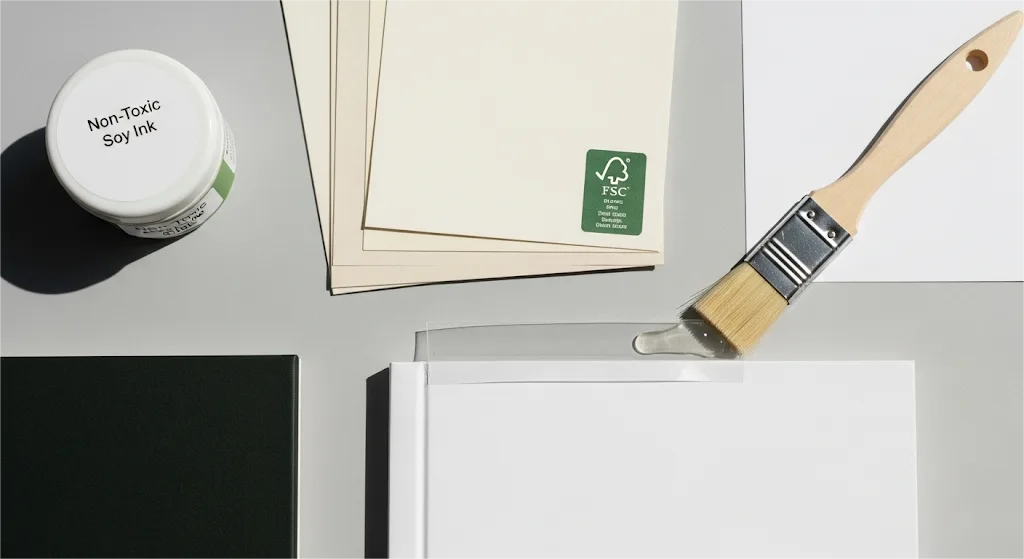
Understanding the safety standards is the first step. The next is choosing the right materials that not only meet these standards but also make your book look and feel fantastic. Here’s a breakdown of the core components and what you should look for when making your selections for your children’s book printing project.
Inks: The Foundation of Safety and Vibrancy
The vibrant colors that capture a child’s imagination must be completely safe. While traditional petroleum-based inks can contain Volatile Organic Compounds (VOCs) that produce a harsh chemical smell, the modern, responsible choice is soy-based ink. What are the benefits of specifying soy-based inks?
- Non-toxic: They are significantly safer for children.
- Eco-friendly: They are derived from a sustainable resource.
- Vibrant Colors: They often produce richer and deeper tones on paper.
- Low in VOCs: This eliminates harsh chemical odors from the final product.
For these reasons, soy-based ink has become the go-to standard for responsible children’s book printers worldwide, a key topic we cover in the guide to eco-friendly printing options. You should consider this a key requirement when discussing your project.
Paper & Boards: The Foundation of Quality and Durability
The paper you choose affects the book’s look, feel, durability, and safety. For the inner pages of picture books, a weight of 120 GSM to 170 GSM is ideal to prevent ink from showing through and to withstand repeated page turns. For board books, pages are constructed from thick paperboard of 400 GSM or more to create a sturdy, tear-resistant final product.
While bright white paper might seem appealing, it can sometimes contain fluorescent agents that cause eye strain. For a more comfortable reading experience for young eyes, consider a softer, natural white or an off-white paper stock.
For publishers committed to sustainability, a critical specification to request is FSC-certified paper, which guarantees the paper comes from responsibly managed forests.
To help you make an informed decision for your bulk printing project, the table below summarizes the most common paper types, their typical weights, and their ideal applications for children’s books.
| Paper Type | Common GSM Weights | Key Characteristics & Best Applications |
|---|---|---|
| Coated Art Paper (Gloss/Matte) | 128 – 200 gsm (Interiors)<br>157gsm (Hardcover Wraps) | For vibrant, sharp colors. The smooth surface makes illustrations pop. The standard choice for most picture books where image quality is paramount. |
| Uncoated Offset Paper (Wood-Free) | 100 – 140 gsm (Interiors) | For a natural feel & writability. Perfect for coloring books, activity books, or picture books aiming for a classic, non-glossy aesthetic. |
| C1S / C2S Paperboard (Cardstock) | 250 – 400+ gsm | For durability & sturdiness. C1S (Coated One Side) is great for softcovers. Multiple layers of C2S are mounted together to create durable board book pages. |
| Ivory / Cream Paper | 80 – 120 gsm (Interiors) | For a warm, eye-friendly tone. Excellent for story-heavy books with fewer illustrations, providing a classic, literary feel. |
Note: GSM (grams per square meter) is the most precise measurement. The choice always depends on the specific project’s goal. Please consult with our specialists for precise paper matching and to receive physical samples.
Adhesives & Lamination: The Unseen Protectors
The safety of a children’s book extends to the components you can’t easily see. The glues used in binding and the films for lamination are just as critical. Low-quality adhesives can contain harmful substances like formaldehyde. Your printing partner should be able to confirm they use exclusively non-toxic, low-VOC or water-based adhesives in their binding processes.
Similarly, cover lamination should not only protect the book from spills and tears but also be stable and safe. It is a valid and important question to ask your printer about the safety compliance of these specific materials.
Insider Insights: How to Partner with Your Printer for Guaranteed Safety

Choosing the right materials is half the battle. The other half is ensuring those choices are perfectly executed by a partner who understands your commitment to safety. Based on our experience with hundreds of international publishers, here are some key strategies to help you manage the children’s book printing process effectively and avoid common pitfalls.
Go Beyond Raw Material Reports: The “Certificate Trap”
We once worked with a meticulous publisher who, quite rightly, requested safety certificates for all paper and inks. This is excellent practice, but a common pitfall is stopping there.
A certificate for a roll of paper doesn’t guarantee the safety of the finished book. The printing process itself introduces new variables—the lamination films, the binding glues, and any special coatings.
A truly responsible printer focuses on the compliance of the final, assembled product.
Therefore, the key question to ask any potential printer is: “What is your process for ensuring the finished product complies with our target market’s regulations, such as CPSIA or EN-71?” Their answer will reveal their true level of expertise.
Evaluate the Team, Not Just the Technology
Many clients ask if we use specific high-end printing presses. While state-of-the-art equipment is important, our most successful projects are always the result of a strong partnership with our dedicated Project Managers (PMs).
A top-tier machine is a tool, but an experienced, English-speaking PM who understands international safety standards is your true advocate on the factory floor. They translate your creative vision into precise production language and anticipate risks.
Before committing to a printer, always request a brief video call with the project manager who will handle your book. Their expertise in children’s book specifics and communication clarity is a powerful indicator of a successful partnership.
Uncover “Hidden” Risks with a Detailed Spec Sheet
While most focus on paper and ink, experienced production managers often ask about less obvious components. These are the details that separate standard printers from true children’s book specialists. When discussing your project, consider asking about these “hidden” elements:
- Lamination Adhesives: Are the glues used to apply the protective film low-VOC and non-toxic?
- Binding Glues: What type of adhesive is used for the spine or for constructing the hardcover case?
- Specialty Finishes: If using Spot UV or glitter, are the varnishes and materials themselves certified as child-safe?
- Metal Components: For saddle-stitched or spiral-bound books, are the staples or coils certified to be free of harmful heavy metals?
To simplify this, we recommend adding a “Full Material Safety Declaration” request to your RFQ. This prompts your potential printer to confirm compliance for every single component of the final product.
Conclusion: Your Checklist for a Safe and Successful Children’s Book
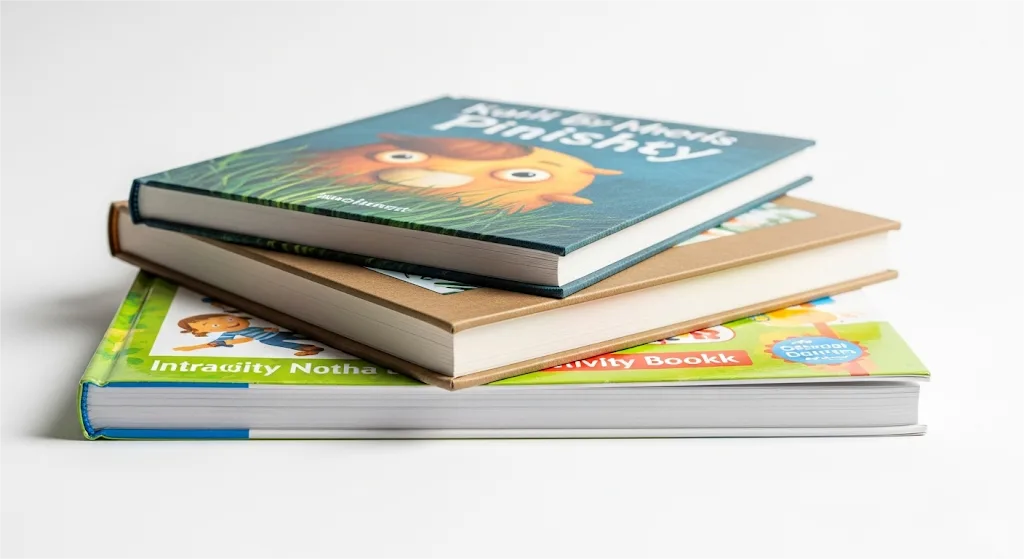
Creating a safe and beautiful children’s book does not have to be an overwhelming process. By understanding the key safety standards, making informed choices about non-toxic materials, and building a transparent partnership with your printer, you can confidently move your project forward.
It all comes down to a process built on diligence and expertise. To simplify your journey, here is a final checklist to guide your conversation with your printing partner:
- Confirm Your Market & Standards: Clearly state your target sales region (e.g., US, EU) and explicitly discuss compliance with the required safety standards (CPSIA, EN-71).
- Specify Safe Materials: Request the use of non-toxic, soy-based inks, low-VOC adhesives, and, where possible, FSC-certified paper.
- Prioritize Physical Safety: Always request rounded corners for books intended for young children.
- Ask for Verification: Inquire about receiving raw material safety reports and discuss the process for obtaining a finished product test from a third-party lab for your bulk order.
- Engage with Your Partner: Communicate openly with your assigned project manager to confirm all details.
Ultimately, a book is a hands-on experience for a child. By investing in safe, high-quality materials, you are not just creating a storybook—you are crafting a tool that safely nurtures a child’s development and love for reading.
f you’re ready to start your project with a partner who prioritizes safety standards and quality as much as you do, our experts are here to help. Contact us today to discuss your specific safety requirements and receive a comprehensive proposal for child-safe children’s book printing.


